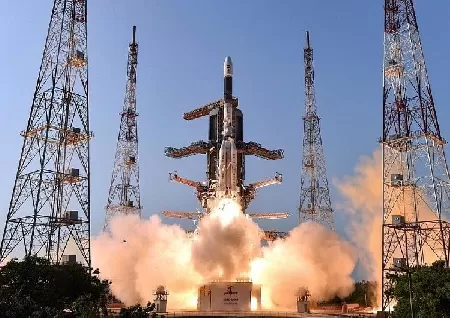ISRO: Key rocket engine test for Chandrayaan- 3 mission successful

The Indian Space Research Organization reports that the flight acceptance hot test of the CE-20 cryogenic engine, which will power the cryogenic upper stage of the launch vehicle for the Chandrayaan-3 mission, was completed successfully. The hot test was conducted on February 24 at the High Altitude Test Facility of the ISRO Propulsion Complex in Mahendragiri in Tamil Nadu for the anticipated time of 25 seconds, according to the national space agency, which has its Bengaluru headquarters. An ISRO statement on Monday stated that "all the propulsion parameters during the test were deemed good and closely corresponded with forecasts." According to ISRO, to achieve the fully integrated flight cryogenic stage, the cryogenic engine will be further integrated with the propellant tanks, stage structures, and related fluid lines. At the U. R. Rao Satellite Center here earlier this year, the Chandrayaan-3 lander conducted an EMI/EMC test successfully. The performance of the satellite subsystems in the space environment and their compatibility with the anticipated electromagnetic levels are ensured by the conduct of an EMI-EMC (Electro-Magnetic Interference/Electro-Magnetic Compatibility) test for satellite missions, it was stated. According to ISRO, "This test represents a significant milestone in the realisation of the satellites." The propulsion module, the lander module, and a rover are the three main elements that make up Chandrayaan-3's interplanetary mission. Due to the intricacy of the mission, radio-frequency (RF) communication channels must be established between the modules.
According to ISRO, the lander and rover compatibility tests for the post-landing mission phase, as well as launcher compatibility, antenna polarisation of all RF systems, standalone auto compatibility tests for orbital and powered descent mission phases, were all carried out during the Chandrayaan-3 lander EMI/EC test. In order to show end-to-end capabilities for safe landing and wandering on the lunar surface, Chandrayaan-3 is a follow-up mission to Chandrayaan-2. The mission will be launched by ISRO in June. Launch Vehicle Mark 3 (LVM3) will launch it from the Satish Dhawan Space Center in Sriharikota (Andhra Pradesh). The propulsion module will launch the lander and rover combination into a 100 kilometre lunar orbit. To examine the spectral and polarimetric data of Earth from the lunar orbit, the propulsion module carries a Spectro-Polarimetry of Habitable Planet Earth (SHAPE) payload.
Related queries to this article
- ISRO
- Chandrayaan 3
- Indian Space Research Organization
- CE-20 cryogenic engine
- ISRO Propulsion Complex
- Mahendragiri
- Tamil Nadu
- Radio Frequency
- Electro Magnetic Interference
- Electro Magnetic Compatibility
Read more articles and stories on InstaSity Trending Topics.





